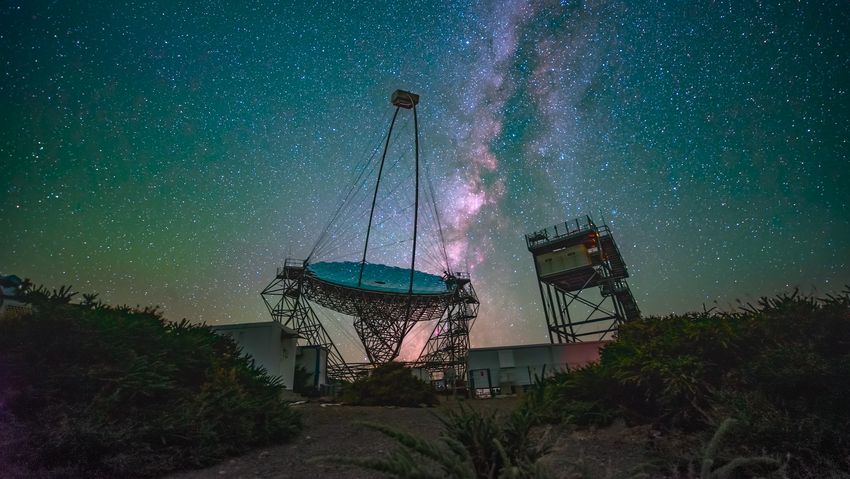As much as galaxies differ in age, shape and size, they have one thing in common: At the center of every galaxy - including our Milky Way - is a supermassive black hole that devours material from its surroundings. They are also referred to as "Active Galactic Nuclei (AGN)". Similar to a vortex, the material circles around the black hole in a highly luminous accretion disk, which simultaneously hurls jets of light and particles into space.
Extagalactic "nebula" swallows gamma rays
At a distance of around 8 billion light years, the radio quasar OP 313 is one of the most distant AGNs we know of. Only nine quasars in this high energy range were previously known - OP 313 is now the tenth. In general, high-energy quasars are more difficult to detect than other types of AGN. One reason for this is that the brightness of their accretion disk attenuates the emission of gamma rays. On the other hand, extragalactic background light (EBL) comes into play, especially at great distances.
The EBL refers to all the light emitted by all cosmic objects outside the Milky Way. It spans several wavelengths from visible to infrared and ultraviolet light. Like a kind of fog, the EBL swallows the gamma rays, making them difficult to observe. The higher the energy of the gamma light, the greater this effect. The LST-1 specializes in a low energy range between 20 and 150 gigaelectronvolts (GeV) which is the energy range of the gamma-ray emission of OP 313.
OP 313 remains under observation
The telescope targeted this OP 313 between December 10 and 14, 2023, after the Fermi-LAT satellite reported unusually high low-energy gamma-ray activity. Several instruments in the optical range confirmed the measurement. With only four days of observation, the scientists involved in LST-1 announced the sighting of the quasar with an energy higher than 100 gigaelectronvolts (GeV).
"This is a great success for the LST-1, a prototype that is currently being commissioned on the Canary Island of La Palma," says Masahiro Teshima, Director at the Max Planck Institute for Physics, whose department played a key role in the development of this type of telescope. The researchers will continue observing this source with LST-1 and the two MAGIC telescopes, two other Cherenkov telescopes on La Palma. "By analyzing more data, we are pursuing several goals," Masahiro Teshima continues. "We want to better understand the EBL, investigate the magnetic fields of radio quasars - and, most fundamentally, explore the physical phenomena in intergalactic space."
